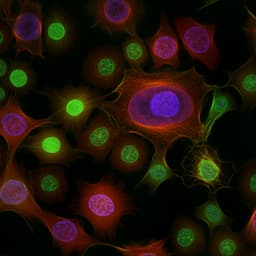
Food Science and Technology
Comparative genomics unveils extensive genomic variation between populations of *Listeria* species in natural and food-associated environments
J. Liao, X. Guo, et al.
Explore groundbreaking research on the genomic variation of *Listeria* species in different environments! This study by notable authors like Jingqiu Liao and Martin Wiedmann uncovers the fascinating links between soil properties, climate, and bacterial genetics, shedding light on how these factors may limit transmission between natural and food-associated settings.
~3 min • Beginner • English
Related Publications
Explore these studies to deepen your understanding of the subject.







